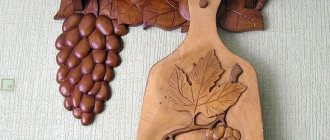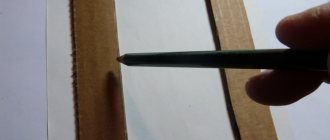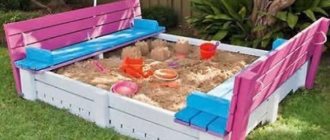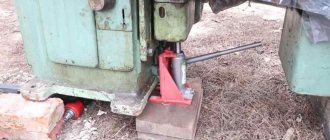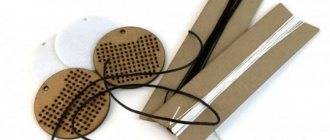For more than 40 years I have been fishing on the bream lake (length 3 km, width -1, depth up to 10 m). This hobby requires a good punt. During this time I tried various of its designs.
In the article I tell you how to make a boat out of wood with your own hands, I attach drawings and photos of the main parts with simple pictures. I try to show how to make them in several ways, so that the novice craftsman has the opportunity to choose the most appropriate option.
What qualities should a fisherman’s wooden boat have that need to be ensured?
Let me immediately note that fishing is not the only purpose of having a punt on hand. In warm summer weather, you can simply drive into the middle of the lake, jump into the water, swim, cool off, and climb back over the stern.
With the onset of the mushroom season, a quiet hunt begins on the islands. And this is a hobby for the whole family: we got together, went and received a lot of positive emotions.
Even just sitting down at the oars, rowing for half an hour or an hour in calm water and fresh air is a pleasant walk, good for health. Children and adults enjoy these trips so much that they become a regular ritual.
However, for all these purposes the boat must meet the following requirements:
- be durable and reliably withstand physical stress when transporting various categories of people, especially children and the elderly who cannot swim;
- have good stability during strong rolling, when you have to row along a large side wave created by a strong autumn wind;
- do not leak from cracks and joints between boards;
- have good buoyancy, ease of movement, requiring low muscular effort when covering long distances;
- combine the ability to install a simple outboard motor and rowing with oars;
- maintain the listed performance characteristics for a long time for at least 10 years.
I explain further in the text how to optimally implement all these six conditions with your own hands.
Manufacturing Features
When building a boat, it is worth considering that the most significant element of the frame part is the base on which the remaining parts (keel) are attached.
The bow area is formed by the stem and is fixed on one side. In the aft part, the fastening is carried out by the sternpost - elements responsible for ensuring the longitudinal rigidity of the structure.
They can be made from wooden materials (solid) or glued together separately and fixed with nails and screws.
The transverse parts of the hull allow you to achieve bends and transverse contours, which adds the necessary rigidity to the craft. In the upper part of the stem and sternpost there are boards connected to the frames. This design forms the sides.
The resulting frame is covered with plywood. A deck (slant) is placed in the inside of the boat. This creates the lower deck.
Boats made of plywood material can be equipped with a motor or oars. The main difference in the design is the aft part. For motorized watercraft, a transom (made of multi-layer plywood) is installed in the stern.
Upon request, the boats can be equipped with a cockpit, deck stringers and side stringers. To ensure good buoyancy, the niches must be filled with foam, which will prevent the vessel from capsizing.
How to easily resin a boat hull
Impregnation of wood with resin protects it from premature rotting and at the same time seals all joints. In northern countries, fishermen constantly treat new wooden boats with a solution of resin in gasoline.
Its consistency is brought to the level of liquid sour cream, and processing is carried out with a regular brush. The protection lasts for a long time, it replaces more expensive oil paint, but at first it gets very dirty.
When I first tried this method, I had to constantly put newspapers on the benches. The paper protected clothes from the resin.
Therefore, seats and places with which people come into contact are not treated in this way, but simply painted. However, nothing prevents the use of other industrial impregnation compositions or conventional oil processing.
The resin is taken from bitumen. It is used in construction as a waterproofing layer and comes in various grades, differing in hardness, viscosity and fluidity.
We usually come across an unknown variety for processing a boat. It must be checked, prepared, brought to the state of chewing gum. To do this, the resin is heated over a fire in a bucket until it boils, oil is added to it, and the viscosity is assessed on a cooled piece.
The resin should stick well to the wood, but not break under load, but stretch. The composition of the oil proportion is determined experimentally.
The place for the fire is prepared in advance at a distance from fire hazardous objects. Two posts are driven into the ground, and a crossbar for a bucket is hung on them.
It is convenient to take the molten resin out of the bucket using a jar with an elongated handle, and process it by rubbing the surface of the boards with a kvoch: a rag wrapped on a stick.
When pouring heated resin into the cracks, use a regular stick with a wedge-pointed end. The varnish that has penetrated into the joints seals the space well and prevents leaks.
To distribute the resin evenly over the surface of the wood, it is additionally heated with a blowtorch flame. The resulting drips are dispersed with a hammer and a wooden wedge. The liquid resin should fill all the cracks.
It is more convenient to work together. Please note that molten resin and open flame from a torch can be harmful to health. Use boots, closed clothing, glasses, work gloves. The consequences of accidentally splashing boiling resin on your body are much easier to prevent than to treat.
Safety precautions are never superfluous.
Deciding on the parameters
Experts presented the most comfortable parameters for a watercraft made on the basis of plywood, the thickness of which is within 5 mm:
- The length of the hull (from bow to transom) is 4.5 (m);
- The width indicator in the widest part of the body (measurements taken from the top) is 1.05 (m);
- The boat depth indicator is 0.4 (m).
The most important stage of construction is the construction of the drawing. You can take a ready-made drawing presented on websites on the Internet or make it yourself.
It is very important to study the proposed drawing very carefully if the diagram is taken from the Internet. It is recommended to construct a scale drawing on graph paper. This will allow you to accurately calculate the body elements.
Stages of creating a general plan sketch
- The first step is to draw an axial (or diametrical) plane - a line dividing the body part along its length into a pair of equal parts. Considering the symmetry of the boat image, all elements should be adjusted as accurately as possible.
- The diametrical type plane is divided into proportional segments. Frames will be located in these areas.
- We draw a vertical projection of the swimming craft.
- Let's move on to building the top view.
- We draw plans of frames along transverse lines.
- We make sure that the locations and scales of all parts are consistent.
- Having drawn up a sketch of the frames, we proceed to constructing its drawing, using a scale of 1 to 1. It is advisable to build drawings on a cardboard base, which will allow you to easily transfer it to plywood.
- To ensure the necessary smoothness , the points should be connected with a metal ruler (from the keel to the side area).
- Having folded the drawing along the diametrical plane, we check the symmetry. It is very important that the sides accurately follow their contours.
An example of a drawing of a plywood boat
Transferring an image from a template to plywood
After checking the symmetry of all elements, we first transfer the image onto a cardboard base. After this, we move on to transferring the templates onto plywood, while accurately observing all the contours. Under no circumstances should you add extra allowances! When transferring the template, the order of the fibers is observed with absolute precision.
Photo of the transom, bottom and sides parts
Let's start collecting
The boat is assembled using the “sew and glue” principle. It’s better to start with the transom - then it will be easier to install the sides. Holes of such a diameter are drilled in the rear of the bottom and in the lower part of the transom that the copper wire can pass through. The holes must be strictly opposite each other. Using pieces of wire, the transom is attached to the bottom. After making sure that the edges match, you need to tighten the twists of the wire with pliers.
Instead of copper wire, you can take a wire of suitable diameter
The sides are attached in a similar way, starting from the stern and ending with the last twist at the bow of the boat. At this point, the result is a collapsible model, which can still be corrected. Trim excess, smooth out uneven areas. After the next operation, you can forget about dismountable tactics.
Final sealing of the joints of the bottom and side plating sheets
After the glue has dried, you will need to lay two canvas strips, thoroughly soaked with epoxy glue, along the inside of the junction of the side and bottom skin sheets. On the outside, the seam must be reinforced with small tow, hammered with a wide flat screwdriver between the edges of the sheathing sheets. Before doing this, it is important not to forget to coat the inside of the seam with epoxy glue and only then quickly push the sealing material there.
When all connecting seams have thoroughly dried, you can begin priming the surfaces. It is done with a brush and spatula. Before the operation, the hull must be turned upside down. Protruding heads of screws and bolts, joints of sheathing sheets and other protruding structural elements are carefully coated with two or three layers of primer. The best option for a primer would be drying oil heated to a boil. Several layers will ensure proper coating quality. Two or three coats of paint will provide a good finish on the outer surface of the hull and will help make your wooden boat more durable.
Material
It is not worth reminding that the material from which the plywood boat will be built must be of high quality. The plywood itself is without knots, the glue is only from a trusted manufacturer, and the impregnating liquids too.
The entire list looks like this:
- Sheet plywood 1.5-1.5 m, 5 mm thick, grade BS, BK or FSF.
- Several boards, preferably oak.
- Fiberglass.
- Putty.
- Waterproof glue.
- Waterproof impregnation for wood or drying oil.
- Waterproof enamel or oil paint.
- Self-tapping screws.
- Nails.
- Copper wire.
When choosing plywood, you need to carefully inspect the edges for chips and cracks at the ends. You shouldn’t hope that you can saw off a couple of centimeters. Everything else can be easily and at a very reasonable price purchased at any hardware or hardware store.
Blitz tips
- When making a swimming device, it is necessary to sand all irregularities that appear after applying epoxy glue with sandpaper.
- Any flaw can be filled with moisture-resistant putty.
- There should not be any particular difficulties when building a boat , but it is extremely important to follow all the recommendations of experts regarding the step-by-step process.
- Before cutting the material, you should once again make sure that the measurements are correct and only then begin cutting out the parts.
- When choosing wooden material for making a watercraft , you should give preference to products without knots and cracks. We select only the highest quality specimens.
- If the structure is assembled correctly, you can be confident in the strength and reliability of the boat. Products made from plywood very rarely leak.
- A boat made of plywood is lightweight , which does not cause any special problems during transportation.
Fastening the gunwale and oarlocks
Along the entire length of the upper part of the frames, you need to attach a gunwale board, which can consist of three parts - two side and a transom stern. It is better to do this using the same screwdriver. You need to immediately prime it with hot drying oil, like the entire body. When the board dries, you should bend thick wire and attach oarlocks to it - loops for oars. Then it is better to coat the gunwale boards with colorless varnish. A boat made with your own hands from boards will more than once justify the time spent on its construction.




